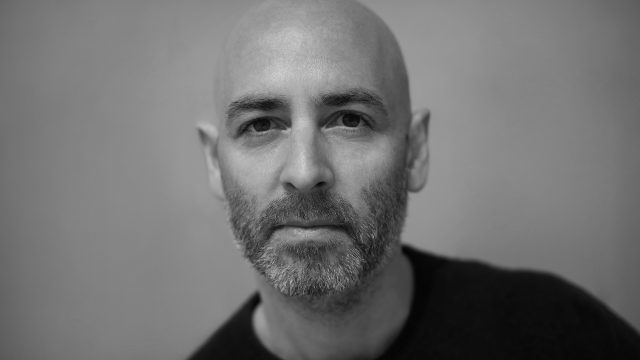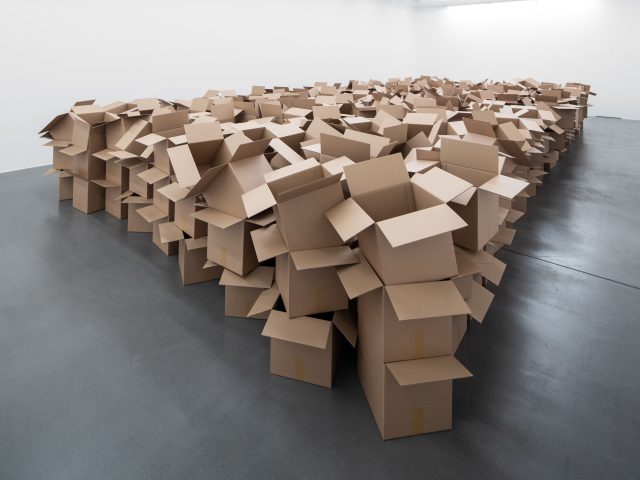To produce sufficient sound, a certain scale and repetitiveness is needed, also inherent to minimalist art. One wooden rod pressed against a cardboard box lacks impact. A thousand cardboard boxes tapped against in a certain (or not certain) rhythm appeals to the viewer physically and has a metaphysical charge. Through repetition, these primitive systems form a complex and interesting whole. It is these two poles that the artist explores: the presence of the simple versus the complex in the same moment. The sound of the installations, subtle yet grand, is penetrating. Like much minimalist art, it combines aspects of bodily vulnerability with universal or even cosmic associations.
Choreographer Richard Siegal and Zimoun are collaborating for the first time. Siegal does often involve artists in his work who somehow inspire, limit or encourage him to adapt his movement language to a particular concept. In dialogue with others, the performance is created. For Zimoun, this is the first time he has created a scenography for a ballet production, or for the stage tout court. For this project, he first develops the basic ideas for a number of scenes. Each includes a sound installation that simultaneously produces the scenery as well as the sound, or music, for the choreography. Richard Siegal goes to work with those conceptual ideas for the dancers so that the choreography and scenography are created simultaneously.
For Zimoun, translating his work to a stage is an interesting challenge. He is already excited that his work will be realized in Opera Ballet Vlaanderen's set studio and thus not in his own studio. Also peculiar to the experience of his work in an exhibition is that the audience can experience it up close, or even in the middle. But perhaps the biggest difference from a museum visit is that a dance performance usually has a precise beginning and end and the audience experiences the experience collectively. It is this perspective that will lead the artist to a new approach.
What will be on show? Only the elements needed to create the sound for the choreography. The artist aims for an impactful installation, an impressive scene and an immersive experience for the audience. He wants to exploit the grandeur of the stage and let his installation and sound evolve throughout the piece. His advice to audiences, therefore, is to dive into the play and become absorbed in the confrontation of the simple versus the complex in the same place and at the same time.
To the website of Zimoun
Discover New ballet mécanique / Half Life

